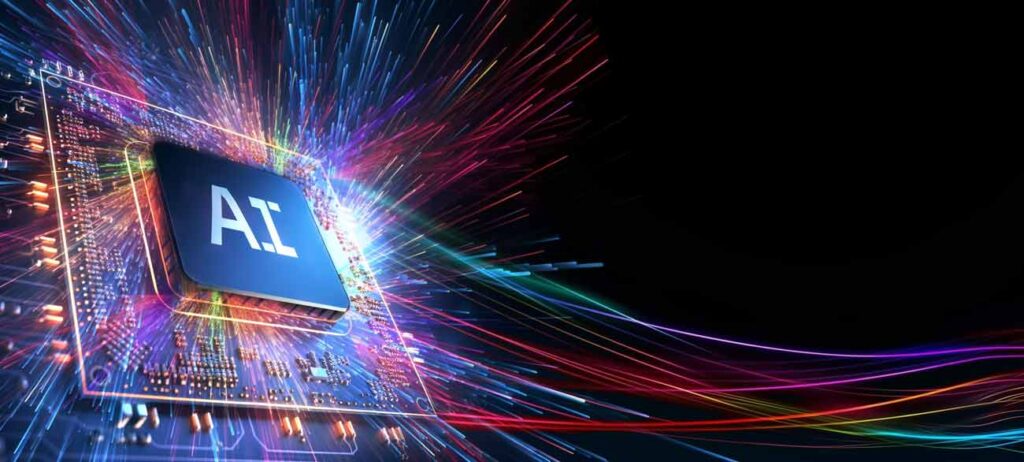At its core, fire protection has always been about early detection and fast response. Traditional systems rely on smoke, heat, or flame to trigger an alarm or activate a sprinkler. While effective, these systems can be reactive rather than predictive.
Now, fire protection is entering a new era, one where it’s not only becoming safer, but also smarter. Artificial intelligence (AI) and advanced sensors are transforming how businesses, schools, and factories manage fire risk, offering a more efficient and proactive approach to keeping everyone secure.
Predictive protection: A smarter first line of defense
Smart sensors that are embedded throughout a facility can collect continuous environmental data, such as temperature fluctuations, air quality, humidity, smoke particles, gas concentrations, and even acoustic signals. AI then analyzes this data in real time, identifying unusual patterns or risks before a fire ever starts.
For example, in a large industrial facility, AI might detect an overheating piece of machinery long before a flame erupts. In a data center, where every second of downtime matters, smart systems can catch signs of potential failure, like electrical faults or airflow changes, and alert maintenance teams preemptively.
These technologies improve safety, prevent costly interruptions, protect valuable assets, and reduce false alarms – a common and expensive issue in many commercial settings.
Integration that works in real time
Modern fire protection is no longer a standalone system. AI-enabled platforms can integrate fire detection with building automation systems, security protocols, and emergency response coordination. An AI-powered platform can both identify a risk and trigger targeted steps, such as closing fire doors, adjusting HVAC systems to contain smoke, and guiding occupants to the safest exits based on real-time heat maps.
This level of coordination is critical in high-occupancy spaces like schools, hospitals, stadiums, and high-rise buildings, where swift and well-coordinated action can be the difference between a minor incident and a catastrophic event. Smart technology allows first responders to arrive on site with a clearer picture of what they’re walking into, and it gives building operators tools to act quickly and accurately.
Why the human element still matters
Even with all the benefits of AI, technology isn’t replacing fire protection professionals – it’s empowering them. Skilled designers, installers, and inspectors are essential in implementing these systems effectively. Advanced tech needs expert interpretation, proper calibration, and thoughtful integration with legacy systems.
Think of this evolution as a partnership that pairs the craftsmanship and code knowledge of seasoned fitters with the precision and predictive power of AI. Together, they create safer, smarter buildings.
Regulatory shifts and industry standards
As AI and smart sensor technologies reshape what’s possible in fire protection, codes and standards are working to keep pace. While traditional sprinkler and alarm requirements remain foundational, we’re seeing new conversations emerge around how AI can supplement, or even enhance, code compliance. Organizations like the National Fire Protection Association (NFPA) are beginning to address how intelligent detection systems and predictive analytics fit within longstanding safety frameworks.
That said, regulatory clarity often lags behind innovation. Building owners and facility managers are left navigating a gray area between what’s allowed, what’s optimal, and what’s still being tested. That’s why it’s essential to work with fire protection professionals who stay updated on evolving standards and who can bridge the gap between emerging tech and established requirements.
The future of compliance will depend on both technological capability and industry leadership, ensuring these tools are implemented safely, responsibly, and in ways that meet local and national fire codes. Smart systems must still be rooted in real-world accountability. After all, innovation in fire protection only matters if it saves lives and holds up under scrutiny.
Building smarter, together
The adoption of AI and smart sensors is a leap forward for the fire protection industry. These tools are changing how we detect, respond to, and prevent fire hazards across industries. And in an era when risk is increasingly complex, smarter fire protection is a necessity.
As fire protection professionals, we shouldn’t aim to merely “keep up” with technology. We can learn to harness it to fulfill our mission: to protect lives, preserve property, and create environments where people have peace of mind. Because in our line of work, innovation is life-saving.

